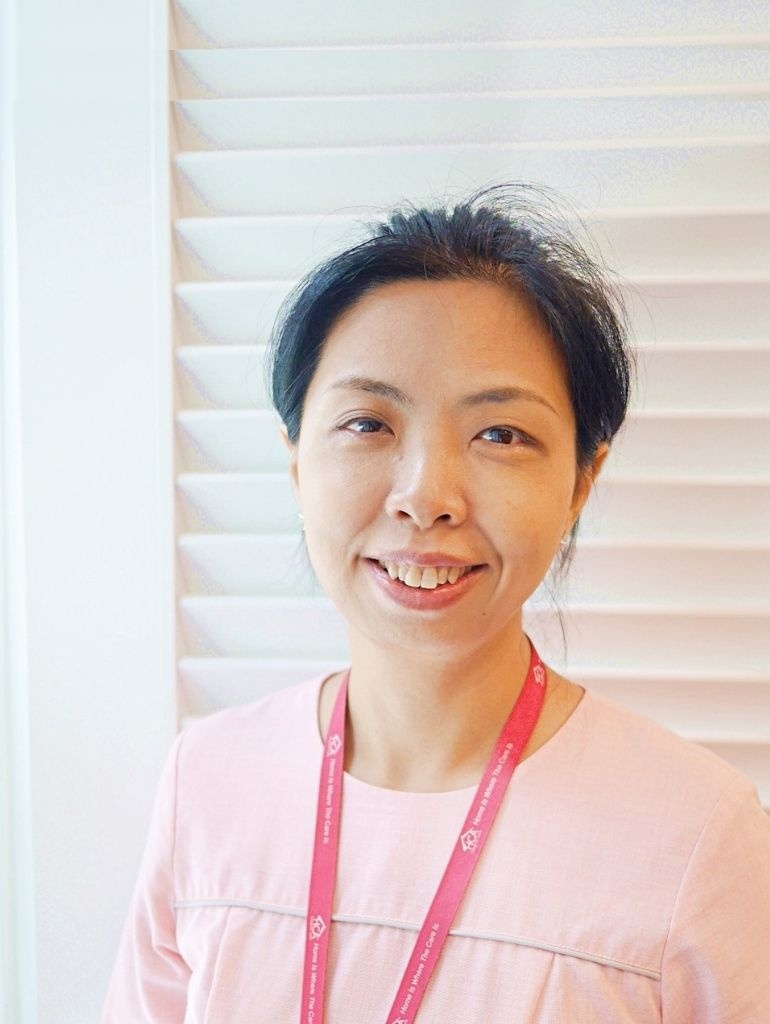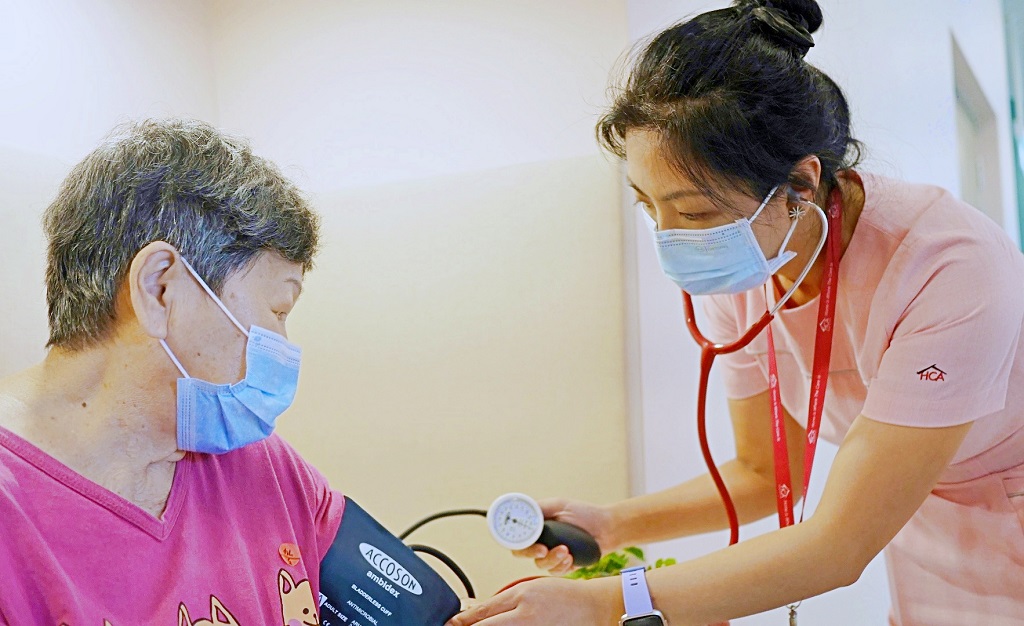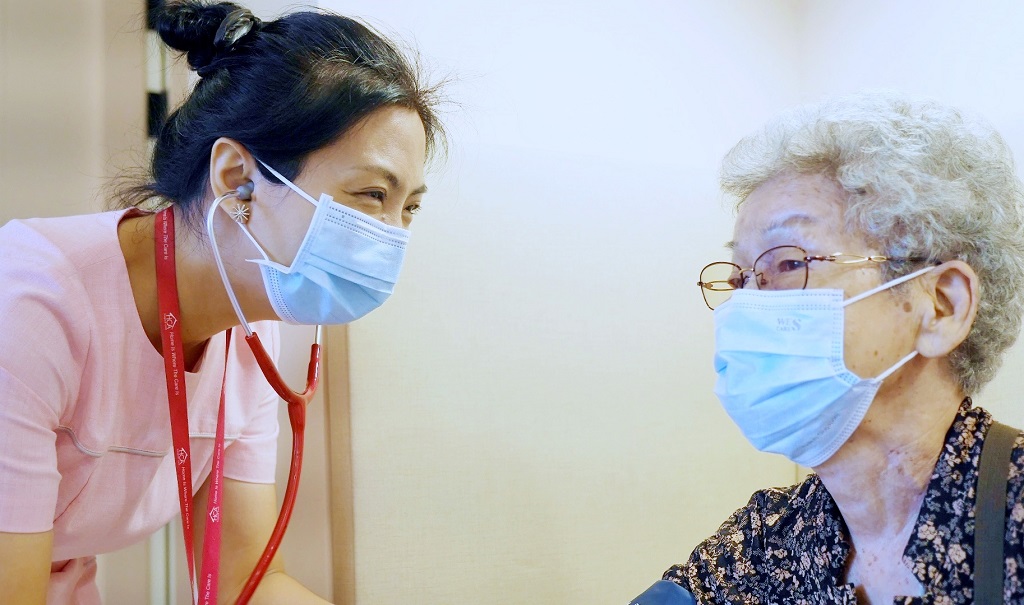
Close


There are many misconceptions about palliative care, which sometimes cause patients and their families to avoid talking about it, much less using the service and hence missing out on the benefits it brings. HCA Nurse Manager Lily Li shares her experience in the field and dispels some of myths and misconceptions surrounding palliative care in this feature. Above: HCA Nurse Manager Lily Li, who has over 20 years of nursing experience.
Many patients and families under Nurse Manager Lily Li’s care, have asked—what is palliative care?
For patients and their families, this question stems from concerns about costs, treatment and medication. And for volunteers who ask the same question, it is the desire to better understand and support our patients. While some have an idea of palliative care, more often than not, most are misguided by the misconceptions shrouding the field.
In her 10 years as a Palliative Care Nurse, Lily has taken it upon herself to educate those who have crossed paths with her.
The term ‘palliative care’ is commonly associated with ‘death’ or ‘being on the death bed,’ but Lily is quick to point out that such is a narrow definition. “Palliative care is supportive care for patients, who are often suffering from life-limiting or life-threatening conditions, but they are not necessarily facing imminent death,” she stressed.
“The general aim is to build a supportive network surrounding the patient, in or out of the hospital, to improve the quality of life for the patient and their family.”
Lily explained that patients are sometimes referred to hospice care providers, such as HCA Hospice , which focuses on end-of-life aspects in palliative care. “Palliative care encompasses hospice care and extends to bereavement support to the patient’s family,” she said. Some of these aspects include familiarising families with common symptoms and guiding families on caring for patients, when death is imminent.
As the largest home hospice provider in Singapore, HCA serves more than 3,600 patients annually. To ensure that all her patients receive timely and appropriate care, Lily and her team plan their home visits based on the urgency and stability of her patients’ conditions.
“Minimally, our frequency of visits is about once a month, as beyond that, it would hard for us to follow up with our patient and provide prompt interventions,” shared Lily.
“When the patient is stable, our visits are usually fortnightly. But if they are unstable, our visits could be as often as daily or two to three times a week.”

Above: Lily performing a blood pressure check on her patient during her home visit. This is one of the many tasks she undertakes during a visit to ensure the patient’s well-being.
Contrary to popular belief, these home visits are more than just about pain management for the patients. It also includes the well-being of caregivers and families. Lily illustrated this with a simple list of tasks that she and her colleagues may perform during their visits:
These home visits are equally important for caregivers and families, because palliative care professionals like Lily have the knowledge and experience to recognise and address problems, arising from the caregiving process.
The hallmark of palliative care will always be about what matters the most to the patients, as quality of life means different things to different people. For some, it means being able to spend their final days at home and others, having control over of the decisions, nearing the end.
“We listen to understand the patients and work on an individualised care plan for them,” Lily assured. In most cases, these plans are to respect the patient’s wishes.
Etched in Lily’s mind is a memory of a former patient, a solitary and elderly gentleman, who wanted his care plan to allow him to live his remaining days to the fullest. “He was very resilient, fighting the illness for years. Yet he managed his complex medication regime independently, took public transport for his medical appointments and cooked for himself.”
Lily recalled that despite having his best interest at heart, not all of his problems warranted a follow-up plan from her.
“He had expressed his fear of dying in pain and alone in his rental flat without a proper funeral. I proposed admitting him into an inpatient care setting where these concerns would be addressed. But he politely refused and I had to respect that,” maintained Lily.
This experience had taught her to live in the moment and enjoy the simple pleasures in life. This has also become part of her advice to other patients and caregivers.
The end-of-life journey is full of uncertainties and unique to each patient; there is neither a definitive duration to every journey, nor an absolute answer to each encounter. At best, as Lily has learnt, there are lessons and advice to help smoothen the journey along the way.

Above: Lily checking in on her patient. As a way to break the ice, Lily may use the time needed for medical assessments to also make small talk and check in on the patient’s emotional and mental well-being.
One advice Lily has for loved ones and caregivers, is to practice self-care and tap on support systems to share care responsibilities.
“The physical demand and emotional stress at this phase of care will intensify. Adequate rest will allow you to be more physically and emotionally resilient, to better care for your loved one.”
At HCA, a 24-hour helpline is available for caregivers who need support in handling care for their loved ones, approaching end-of-life.
Given Lily’s extensive background in acute care and palliative care, she is an advocate for conversations about death.
“Without discussion about end-of-life matters, we lose the opportunity to recognise the needs and wants of our loved ones most. We also deprive them of the chance to make their wishes known.”
While it is a difficult topic to broach, the conversation provides greater insight to caregivers on the best way to care for their loved ones and prevent unnecessary regret and guilt. Lily suggested two possible ways to start the conversation with loved ones:
1. Using resources, like books and games;
2. Speaking with a palliative care team about advanced care planning.
Above all, Lily hopes that caregivers and family members would focus on their loved one’s quality of life as a whole, create meaningful memories with them and remember them more than their days of sickness. “Because life is always greater than the disease itself.”